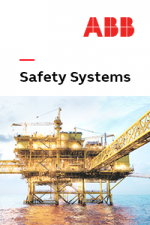- Russian Dam Disaster: Assessing the Cost of Failed Safety Practices
- Analyzing the Human Element of the Russia Dam Disaster
- Turbine 2: How a Track Record of Uncertainty Led to Disaster
- Russian Dam Disaster: A Reckoning for Bypassed Safety
- When Running People Past Their Breaking Point Effects Safety: The Bayer Crop Science Incid…
Williams Olefins Incident: Process Hazard Analysis: Finding the Hazard
New valves introduced into the propylene fractionator at the Williams Olefins chemical plant in Geismar, Louisiana, led to a serious overpressure hazard to the reboilers.
By introducing the new valves, the company conducted a management of change (MOC), which should have led to a more involved Process Hazard Analysis (PHA). If the PHA was conducted by a qualified safety professional he or she could have identified the hazard, which led to the June 13, 2013, deadly explosion that killed two workers and injured 167 others in a catastrophic equipment rupture, explosion, and fire.
In 2000, Williams Olefins Geismar plant management approved $270,000 to install valves on the process side and quench water side of six of the quench water heat exchangers, including the propylene fractionator’s Reboiler A and Reboiler B. In 2001, Williams installed the valves, but did not identify the overpressure hazard that resulted.
Occupational Safety and Health Administration (OSHA) Process Safety Management (PSM) and the Environmental Protection Agency (EPA) Risk Management Programs (RMP) regulations require covered facilities to perform or revalidate a PHA at least every five years to identify, evaluate, and control hazards.
Williams Olefins performed three PHAs in 2001, 2006 and 2011, following the installation of the valves on the propylene fractionator reboilers. However, the company did not sufficiently implement the recommendations issued in those PHAs and did not effectively mitigate overpressure hazards in the propylene fractionator reboilers.
The 2001 PHA evaluated possible consequences of closing the propylene fractionator reboiler process valves when they should be open. The PHA team did not identify reboiler overpressure as a possible safety consequence. Instead, the team identified a low-severity process upset.
An effective PHA performed by a qualified safety professional would have identified the more serious reboiler overpressure because that is a typical potential hazard.
The PHA team discovered that the piping and instrumentation diagrams (P&IDs) did not illustrate the new valves on the propylene fractionator reboilers. The PHA team recommended updating the P&ID.
During the 2006 review, the PHA team emphasized evaluating whether equipment had sufficient overpressure protection. The PHA team identified the propylene fractionator reboilers “potentially don’t have sufficient relief capabilities – could over pressurize equipment.”
As a result, the PHA team issued the following recommendation: “Consider locking open at least one of the manual valves associated with each of the propylene fractionator reboilers so the relief valves on top of the propylene fractionator can provide thermal relief protection for these reboilers.”
This 2006 PHA recommendation was marked “Complete” over three years later in January 2010. However, the recommendations were not properly implemented. Only the shell-side outlet valve of the operating reboiler was car sealed open (a car seal is a simple device used to lock or 'seal' a valve in the open or closed position). The shell-side valves of the standby reboiler remained closed, with no car seals on the manual valves and no protective pressure relief device installed on the shell.
That configuration isolated the standby reboiler from the relief device on top of the propylene fractionator, creating a high-risk scenario. Thus, the PHA recommendation was improperly implemented. The error remained unidentified because key process safety programs were not performed.
To make matters worse, the contracted PHA facilitator was also under the incorrect impression that both propylene fractionator reboilers were operating at the same time. This erroneous assumption likely contributed to the PHA team choosing car seals as the overpressure protection strategy, as the shell-side valves would have to be open for both reboilers to operate.
If the PHA facilitator knew that only one reboiler operated at a time, his recommendation to car seal open the operating and standby reboilers would be highly atypical. Under such circumstances, the standby reboiler would not be operating, but would still remain open to the process and be filled with process liquid.
With complete and accurate knowledge, the safety experts would have come to the conclusion that pressure relief valves would have provided a more robust safeguard when compared to car seals.
In 2011, Williams conducted its next propylene fractionator PHA.
During the 2011 PHA facilitators relied on Williams Olefins’ action item tracking system and their MOC database to identify changes made to the process since the last PHA. The Williams Olefins PHA action item tracking system incorrectly indicated as “complete” the 2006 recommendation to lock open at least one of the manual process valves on each reboiler. Therefore, the PHA facilitator documented as safeguards in the 2011 spreadsheet that valves on both reboilers were car sealed open to provide relief protection.
Williams Olefins did not perform a field verification of the documented safeguards. As a result, they did not identify the discrepancy between the documentation and the actual equipment installed.
In order to find out how some of the various mistakes that occurred over time should have been addressed and prevented, click here.


